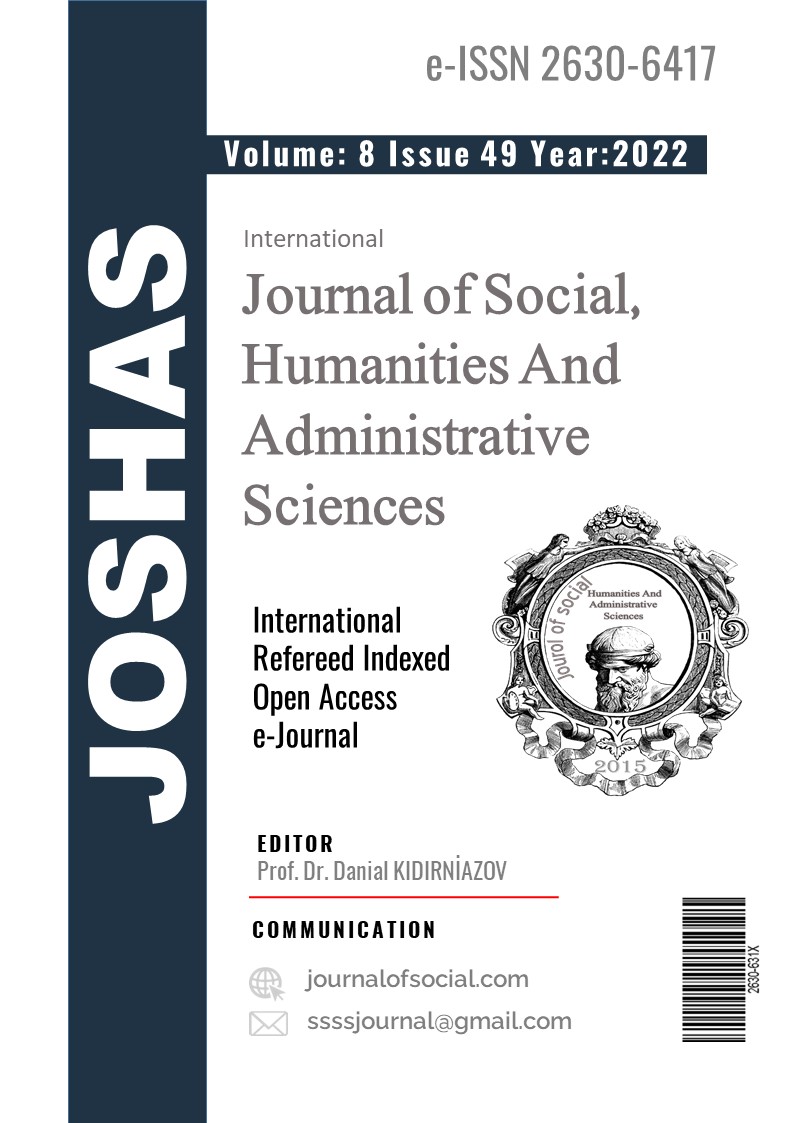Fredeick John Kiesler And The Körperkultur Movement: Body, Nature, And Perception (Frederick John Kiesler ve Körperkultur Hareketi: Beden, Doğa Ve Algı İle Birlikte Form Anlayışı)
Author :
Abstract
During the rise of industry, Gottfried Semper’s understanding of tectonics and notions of body and dressing of building highly dominated architecture of Nineteenth Century Germany. Later in the twentieth century, being concerned with the human body and its health, the Körperkultur Movement emerged as an important social change and emphasized the negative consequences of industrialization. After the Korperkultur, the Austrian-born architect and artist Frederick John Kiesler also dealt with tectonics in architecture regarding the relationship between body and dressing of building. His interpretation of architectural form includes references to body, nature, and perception that are parallel to the doctrines of the Korperkultur and shows that how such a cultural movement had a significant impact on architecture. This study seeks to examine how Kiesler interpreted form in his architectural design in terms of the notion of body together with the aspects of nature and perception similar to the approach of the Körperkultur.
Endüstrinin yükselişi boyunca, Gottfried Semper’in tektonik ile birlikte beden ve binanın giydirilmesi kavramlarını anlayış şekli 19. Yüzyıl Almanya’sının mimarlığını büyük oranda domine etmiştir. Daha sonra, 20. Yüzyılda, insan bedeni ve onun sağlığı ile ilgilenerek, Körperkultur hareketi önemli bir sosyal değişim olarak ortaya çıkmış ve endüstrileşmenin olumsuz etkilerine dikkat çekmiştir. Körperkultur sonrası, Avusturya doğumlu mimar ve sanatçı Frederick John Kiesler de beden ve bina giydirilmesi arasındaki ilişki bağlamında mimarlıkta tektonikle ilgilenmiştir. Kendisinin mimari formu yorumlaması bedene, doğaya, ve algıya Körperkultur öğretilerine benzer referanslar içermekte ve böyle bir kültürel hareketin mimarlık üzerinde nasıl bir önemli etki yaptığını göstermektedir. Bu çalışma, Kiesler’in kendi mimarı tasarımında formu beden kavramı ile birlikte doğa ve algı yönleriyle birlikte Körperkultur yaklaşımına yakın bir şekilde nasıl yorumladığını incelemeyi amaçlamaktadır.
Keywords
Abstract
During the rise of industry, Gottfried Semper’s understanding of tectonics and notions of body and dressing of building highly dominated architecture of Nineteenth Century Germany. Later in the twentieth century, being concerned with the human body and its health, the Körperkultur Movement emerged as an important social change and emphasized the negative consequences of industrialization. After the Korperkultur, the Austrian-born architect and artist Frederick John Kiesler also dealt with tectonics in architecture regarding the relationship between body and dressing of building. His interpretation of architectural form includes references to body, nature, and perception that are parallel to the doctrines of the Korperkultur and shows that how such a cultural movement had a significant impact on architecture. This study seeks to examine how Kiesler interpreted form in his architectural design in terms of the notion of body together with the aspects of nature and perception similar to the approach of the Körperkultur.
Keywords
- Anderson, Mark. (1992). Kafka’s Clothes: Ornament and Aestheticism in the Habsburg Fin de Siècle, Clarendon
- Anderson, Mark. (1992). Kafka’s Clothes: Ornament and Aestheticism in the Habsburg Fin de Siècle, Clarendon Press, Oxford University Press, Oxford, New York.
- Bale, John, & Chris Philo. (Eds.). (1998). Body Cultures: Essays on sport, space and identity, Routledge, London.Bogner, Dieter, & Peter Noever. (Eds.). (2001). Frederick J. Kiesler: Endless Space, Hatje Cantz Verlag, Ostfildern-Ruit.
- Braham, William W. (1998). ‘‘What’s Hecuba to Him? On Kiesler and the Knot’’, Assemblage, (36):6-23.Day, Jeffrey L. & Brian T. Rex. (1984). ‘‘Everyday Geometries: Synthetic Parts and Superficial Qualities’’, Journal of Architectural Education 57 (2):29-35.
- Ekici, Didem. (2008). ‘‘From Rikli’s light-and-air hut to Tessenow’s Patenthaus: Körperkultur and the modern dwelling in Germany, 1890-1914’’, The Journal of Architecture 13 (4):379-406.
- Dpr-Barcelona. (2009). Endless House | Frederick Kiesler, http://dprbcn.wordpress.com/2009/09/21/endless-house- frederick-kiesler/.
- Frampton, Kenneth. (1996). ‘‘Rappel a L’ordre, the Case for the Tectonic’’. (Ed. Kate Nesbitt), Theorizing a NewAgenda for Architecture: An Anthology of Architectural Theory, 1695-1996, pp. 518-528, Princeton Architectural Press, New York.
- Frampton, Kenneth. (1995). Studies in Tectonic Culture: The Poetics of Construction in Nineteenth and Twentieth Century Architecture, The MIT Press, Cambridge.
- Frascari, Marco. (1985). ‘‘Function and Representation in Architecture’’, Design Methods and Theories 19 (1):200- 216.
- Frascari, Marco. (1984). ‘‘The Tell-the-Tale Detail’’, (Eds. Paula Behrens & Anthony Fisher), VIA 7: The Building of Architecture, pp. 23-37, The MIT Press, Cambridge, Mass.
- Frecot, Janos, Geist, Johann Friedrich & Kerbs, Diethart. (1972). Fidus, 1868– 1948; zur ästhetischen Praxis bürgerlicher Fluchtbewegungen, Rogner & Bernhard, Munich.
- Hendrix, John. (2003). Architectural Forms and Philosophical Structures, Peter Lang, New York.
- Kiesler, Frederick, J. (1966). Inside the Endless House, Simon & Schuster, New York.
- Kiesler, Frederick, J. (1966). Model of the Endless House, https://www.archdaily.com/126651/ad-classics-endless- house-friedrick-kiesler/50380a2928ba0d599b000aad-ad-classics-endless-house-friedrick-kiesler-
- Kiesler, Frederick J. (2007). ‘‘On Correalism and Biotechnique: A Definition and Test of a New Approach to
- Kiesler, Frederick, J. (1966). Plans and Elevations of the Endless House. ttps://www.archdaily.com/126651/ad-
- Krüger, Michael. (2012). ‘‘Sports in the German University from about 1900 until the Early Years of the FederalRepublic of Germany: The Example of Muenster and the ‘‘Westfaelische Wilhelms-University’’, The International Journal the History of Sport 29 (14):1981-1997.
- Mallgrave, Harry Francis. (2010). The Architect’s Brain: Neuroscience, Creativity, and Architecture, Wiley- Blackwell, Chichester, West Sussex, U.K.
- Pallasmaa, Juhani. (2005). The Eyes of the Skin: Architecture and the Senses, Wiley-Academy; John Wiley & Sons, Chichester, Hoboken, NJ.
- Semper, Gottfried. (2004). Style in the Technical and Tectonic Arts; or, Practical Aesthetics (Trans. Harry Francis Mallgrave and Michael Robinson), The Getty Research Institute, Los Angeles.
- Semper, Gottfried. (1989). The Four Elements of Architecture and Other Writings (Trans. Harry Francis Mallgrave and Wolfgang Herrmann), Cambridge University Press, Cambridge.
- Wesely, Dalibor. (2002). ‘‘The Architectonics of Embodiment’’, (Eds. George Doods & Robert Tavernor), Body andBuilding: Essays on the Changing Relation of Body and Architecture, pp. 29-43), The MIT PRess, Cambridge, Mass.van Eck, Caroline. (1994). Organicism in Nineteenth-Century Architecture: An Inquiry into its Theoretical and Philosophical Background. Architectura & Natura Press, Amsterdam.
- Vitruvius. (1999). Ten Books on Architecture (Trans. Ingrid D. Rowland, Commentary and Illustrations by Thomas Noble Howe), Cambridge University Press, Cambridge.





